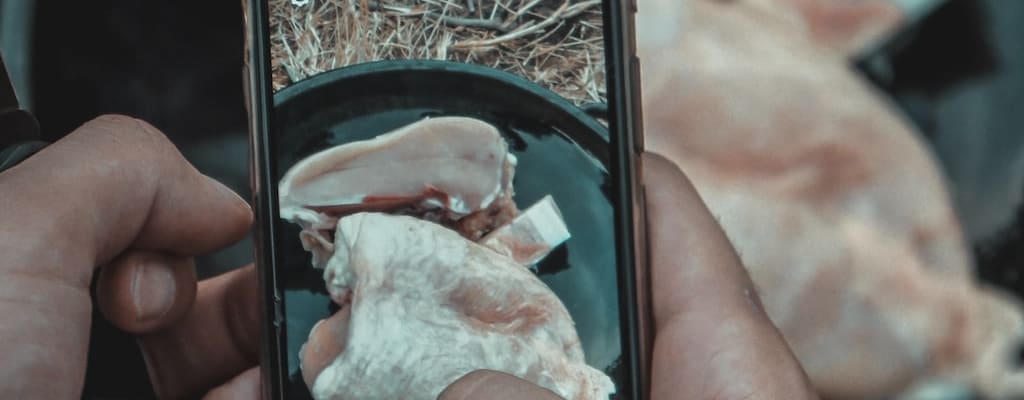by the eye: Idiom Meaning and Origin
What does ‘by the eye’ mean?
When used figuratively, the idiom "by the eye" means making a judgement or decision based solely on appearance or outward impression, without any concrete evidence or deep analysis.

Idiom Explorer
The idiom "throw an eye" means to quickly glance or look at something or someone, usually with curiosity or suspicion.
The idiom "give someone the eye" means to look at someone in a way that shows interest or attraction. It is often used to describe a flirtatious or seductive look.
The idiom "eye up" means to look at or observe someone or something with interest or desire, typically in a romantic or sexual way.
The idiom "eyes on the prize" means to keep one's focus and attention on achieving a goal or desired outcome in order to be successful.
The idiom "eye sex" refers to a non-verbal exchange of intense and suggestive looks between two people. It conveys a strong mutual attraction or flirtation, often described as a passionate gaze. This expression emphasizes the intensity of the visual connection rather than any physical or verbal interaction.
The idiom "eye-opener" means something that is surprising or enlightening, often leading to a change in perspective or understanding.
The idiom "eye of the beholder" means that beauty or value is subjective and can vary from person to person, as different people have different perspectives and opinions.
The idiom "easy on the eye" means visually attractive or pleasing to look at.
Unveiling Visual Perception
The idiom *by the eye* is an expression commonly used in the English language. It has both a literal and figurative meaning.
When used literally, *by the eye* refers to making a judgment or estimation by visually observing something or someone. This means relying on visual perception rather than specific measurements or calculations. You might say, "I can tell the recipe needs more salt just by the eye, without measuring it exactly."
Figuratively, *by the eye* indicates a subjective assessment or evaluation based on personal opinion rather than objective criteria. It suggests that the judgment is based solely on what one can see or perceive at face value, without considering underlying factors or additional evidence. An example would be saying "She gave him the eye, indicating her interest in him."
This idiom is commonly used in everyday conversations, literature, and even professional settings. It allows individuals to express their estimation or evaluation without relying on precise measurements or objective criteria. However, it is important to note that *by the eye* is not always the most accurate or reliable method of assessment since it is subjective and based on personal perception.
The origins of this idiom are not entirely clear. However, it likely comes from the idea of using one's own eyesight and personal judgment to make estimates or assessments. This concept is relatable and universal, which explains the widespread use of the idiom. Its evolution over time is a natural result of common usage and cultural influences.
While the idiom *by the eye* has a clear and straightforward meaning, its interpretation can vary depending on the context and individual perspective. It illustrates the human tendency to rely on visual perception and subjective judgment, but it also allows room for diverse perspectives and subjective experiences. In this sense, it reflects the *eye of the beholder* idiom, which suggests that beauty or value is determined by the individual's subjective perception. This demonstrates the importance of considering multiple perspectives when forming judgments.
In addition to *by the eye* and *eye of the beholder*, there are two other idioms related to the concept of eyes - *throw an eye* and *give someone the eye*. *Throw an eye* is an idiom used when someone quickly glances or looks at something, often to check or assess it briefly. For example, you might say, "He threw an eye at the document to see if it was worth reading."
On the other hand, *give someone the eye* means to look at someone with interest, attraction, or flirtation. It implies making eye contact in a way that conveys a specific message or intention. For instance, you might say, "She gave him the eye from across the room, indicating her interest in him."
All these idioms related to eyes highlight the importance of using visual perception and subjective judgment in various aspects of life, whether it's estimating, assessing, or expressing interest. They remind us of the subjective nature of perception and the need to consider multiple perspectives when forming judgments.
Example usage
Analysis:
The idiom "by the eye" is used to describe something that is estimated or judged based on appearance or visual observation, rather than using precise measurements or calculations. Here are three examples of how this idiom can be used:
- She decided to measure the length of the table by the eye, rather than using a measuring tape.
- The carpenter estimated the size of the gap by the eye and cut the wood accordingly.
- The chef seasoned the dish by the eye, adding spices based on how it looked and tasted.
More "Idioms" idioms



